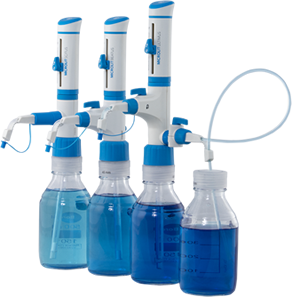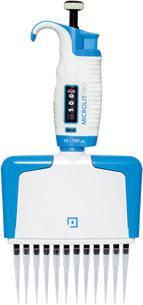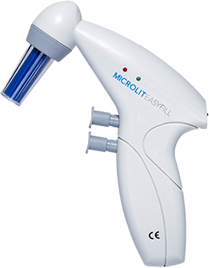To ensure the accuracy of sampling, it is important to check the micropipette calibration every month or in a few’s month’s gap. In order to calibrate the micropipette we need the below apparatus.
- Micropipette that needs to be calibrated and tips
- Distilled water and density chart with temperature
- Clean Beaker
- Thermometer
- Semi-Micro Balance with the readability of at least 0.0001 gram
- Notebook and calculator
There are some steps that need to be followed to calibrate the micropipette properly:
- Leave the distilled water out for 15-20 minutes to ensure a consistent temperature.
- Use the thermometer to measure the temperature of the distilled water that should be stable with minor tolerance.
- Place the empty and clean the beaker on the balance and take the beaker’s weight.
- Make sure that the micropipette is clean and ready to function.
- When filling the pipette up to the calibrated volume (1ml, for example) with distilled water, ensure that air bubbles have not formed in the flask and micropipette.
- Dispense the distilled water in the beaker using the pipette.
- Use the balance to measure the distilled water’s weight.
- Repeat the whole process 5-10 times at least and note each measurement.
- Use the formula V = W * Z to calculate the volume dispensed by the pipette.
W is the weight of the distilled water
Z is the “conversion factor based on the density of the water” and
V is the calculated volume of dispensed water
The temperature of the water determines its density, which is why it is important to keep the water temperature as constant as possible. Skip if you have software that automatically does that.
- Average the results. If you did 10 tests, divide the sum of the 10 tests by 10. The average weight of the distilled water is the W in the equation. You can now solve the equation manually, or use the software.
- The next step is determining the pipette’s accuracy, manually or via software. If you have to do it manually, use the formula A = 100 x Vavg/V0
A stands for Accuracy.
Vavg is the average calculated volume.
V0 is the value assigned for the pipette to dispense.
It is recommended that the value should be between 99 and 101%.
- Record the results. If the micropipette is properly calibrated, you can use it. If the results are consistently wrong, do not use the micropipettes or fix before using it again.





 14651
14651











